A Lesson in Attention
Finding tufted puffins and more
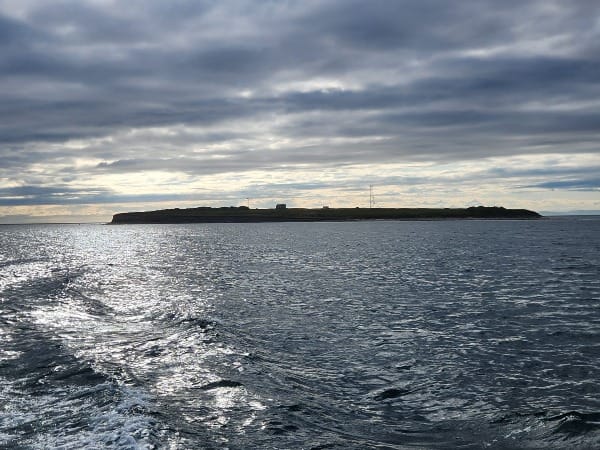
I'm no birder, but I've taken an increasing interest in birds since moving to Skagit County. We arrived in winter and the first time we drove around the valley sight-seeing, my spouse and I encountered enormous flocks of snow geese. A few more encounters like that over the next few weeks and my sense of the living world changed, enlarged, became more connected. (You can read my creative engagement with these geese in this essay.)
I'm no birder, but I pay more attention than I used to. And that means I sometimes go places just to look at birds. This weekend, we headed out with The Salish Sea School to search for tufted puffins. We found a handful of them and much more, an experience that again affected how I understand the living world we are part of.
From Anacortes, we filed onto the Koinonian and headed out of Burrows Bay into the Salish Sea passing Burrows and Allan Islands before hitting more or less open water. Williams Rocks, a tiny outcropping, just beyond Allan was covered with black spikes along its ridge–cormorants en masse, which augured well our hopes for the trip.
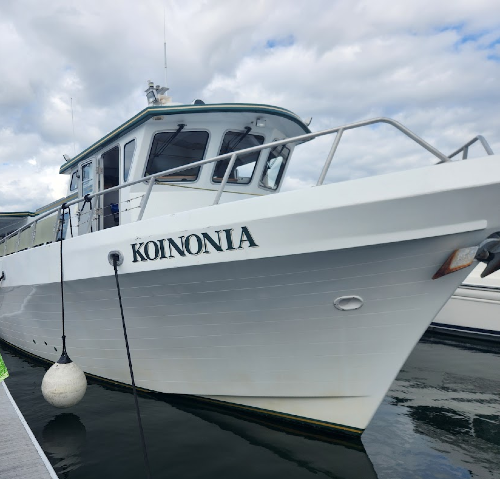
Although indoor seating was available, we elected to enjoy the 50-minute trip to our destination from the deck. The calm water was easy on those prone to motion-sickness, but it slapped against the waves hard enough that I was glad to be wearing a raincoat.
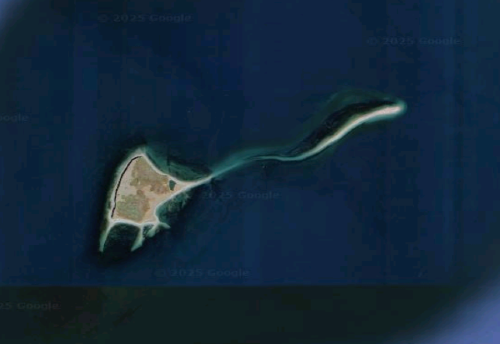
Soon a small island appeared ahead. As we neared it, we could see towers and buildings, obviously derelict but still somehow inviting.
In 1858, barely after Washington had become an independent territory, the Smith Island Light was built. It sloughed off into the sea in 1998. What we could see had been added in 1957. Some other buildings still stood; others had been taken down. The National Oceanic and Atmospheric Administration operates a weather station just offshore. It's long been a working island it seems.
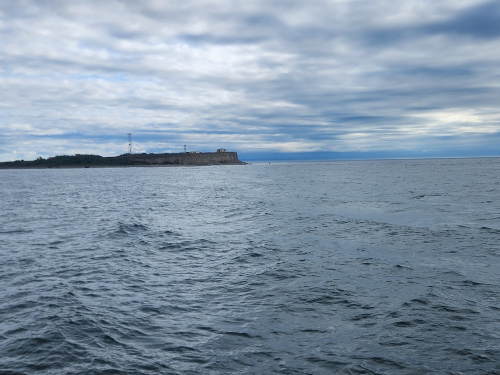
As we powered nearer, no one shared this history; we were there for birds. Although the tufted puffins are not endangered, their range is contracting dramatically. The state lists it as a Species of Greatest Conservation Need and a Priority Species. They are abundant in the North Pacific, but they have disappeared from 90% of their range on the West Coast.
The boat slowed and binoculars scanned the sea. In no time, the very skilled naturalist leading the trip—a recent graduate of my alma mater—spotted tufted puffins there and there and there. "Look for a football-sized bird on the water," she encouraged us.
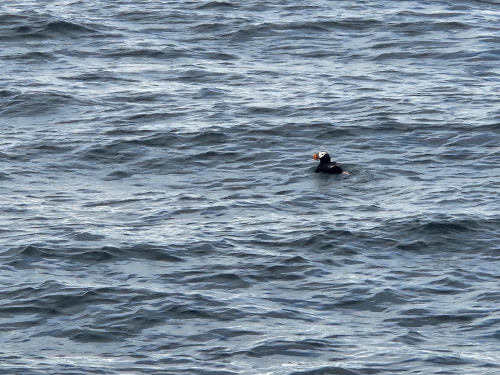
The birders we were with snapped photos, scanned the surface with binoculars for the colorful birds, and smiled at their good fortune. I joined in, but what I really wanted to do was wander the island and look in the buildings.
As is my wont, I wondered what life so isolated–at least from people–might have been like. Recall that Murray Morgan had written about a similar island off the Olympic Peninsula, something that captured my imagination months ago. I know life on such an island would entail a great amount of work, but I can't help but imagine how many books I could read on an isolated island with nothing but birds and the wind as company.
Smith and Minor Islands are part of both the San Juan Islands National Wildlife Refuge and a state aquatic reserve. Among other things, that means we couldn't go ashore or even that close to shore, so we gazed from a distance. Surrounding the bluffs, swirling around more benignly than Hitchcock's crows, gulls swarmed the island riding the wind and conjuring abundance.
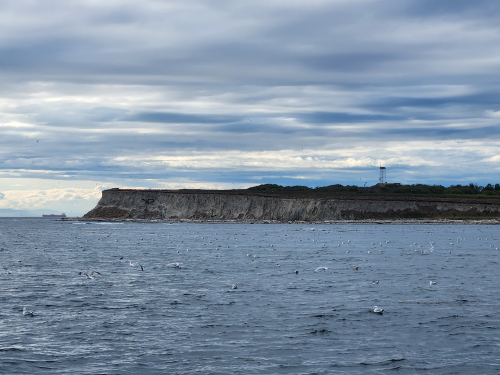
Meanwhile, off the west side of Smith Island, the largest bull kelp forest in the state floats around supplying rich habitat. Their bulbed shape easily confused us as we searched for an otter the naturalist has seen here. And while kelp is not an exotic piece of nature to me, I saw it shimmering in ways I had never seen before, making it seem more alive than I'd ever noticed.
The tide was high enough to cover the slim spit that connects Smith Island to Minor Island, and as we neared Minor Island—an especially apt name—we saw it absolutely covered with birds. Then, we saw the various seals lounging around, dozens upon dozens lying next to each other like sacks of feed. Once we got downwind, we experienced the rich smell of a bird colony, while spotting a brown pelican among all the other birds—a real highlight for me (the pelican, not the smell).
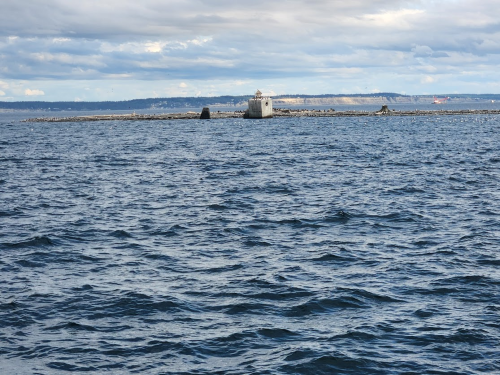
Then the bow pointed north, and we headed back.
I felt strangely exhausted. All told, we spent roughly an hour circumnavigating the islands, and all I did was look at birds and water—and smiled. The exhilaration wore me out.
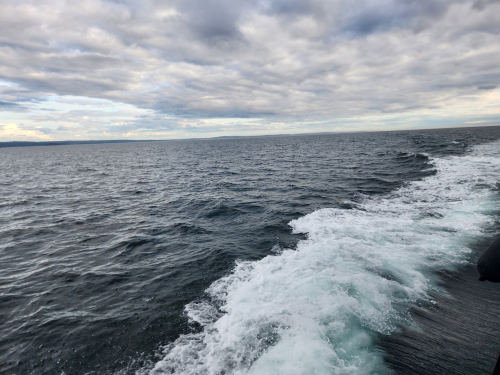
This reminder is important. Relatively small amounts of time focusing intensely on nature can be transforming. I have now seen tufted puffins in the wild (and a brown pelican). I know where a couple dozen nests are located. I saw a swirl of gulls not quite like any I had seen before. My life was enriched. Add up experiences like this and soon you notice that you inhabit a miraculous planet worthy of your attention and dedication.
As we returned, we skirted the western side of Burrows Island to push through Burrows Pass. We powered past a lighthouse. I have old associations with lighthouses from childhood; they always spark my nostalgia.
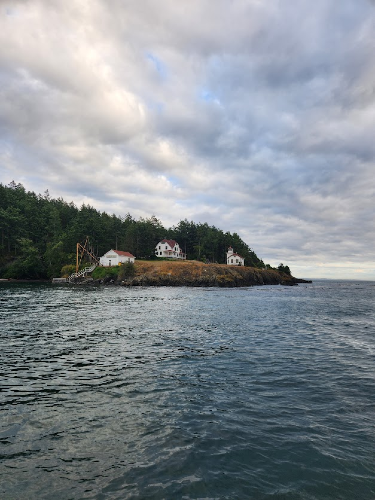
Besides settings for stories and historic sites in parks, lighthouses have served as tools, warnings of danger, beacons meant to redirect.
Birds do the same. We ought to attend to the bright light they are showing us.
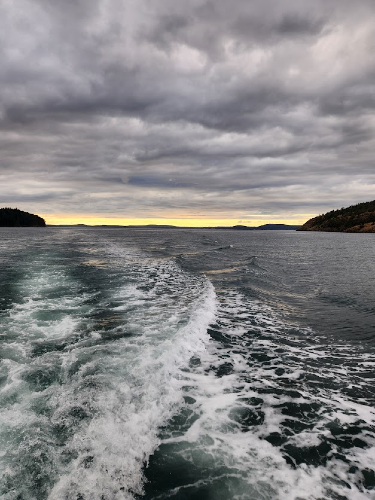
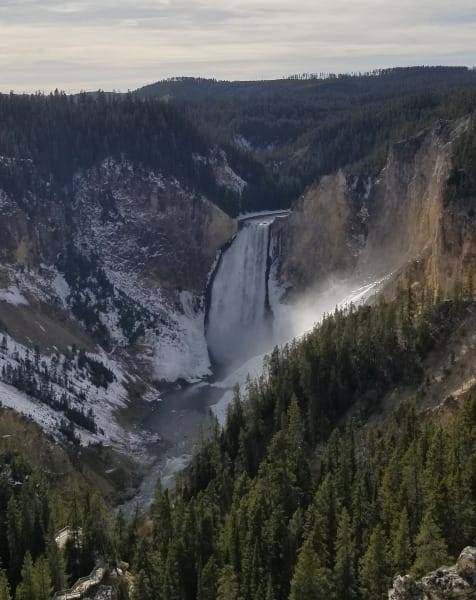
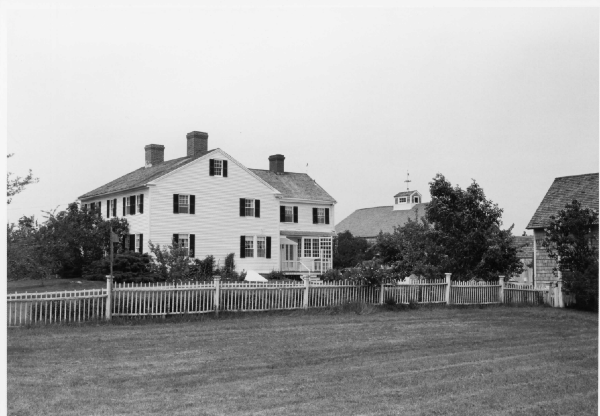
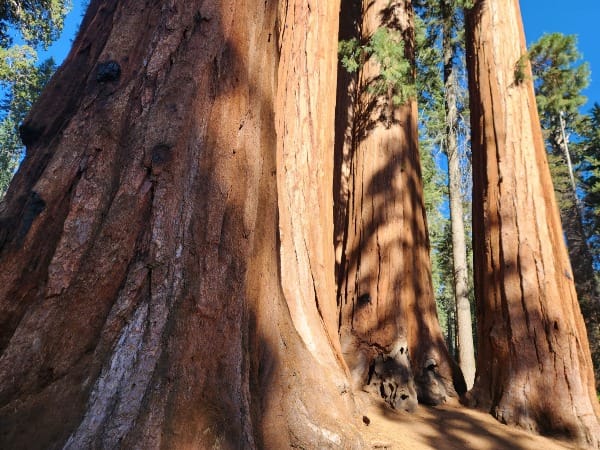
Comments ()